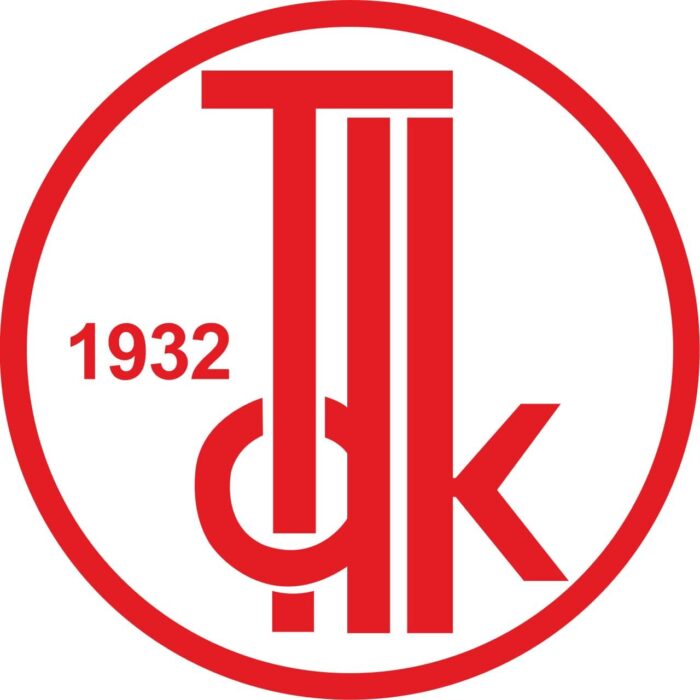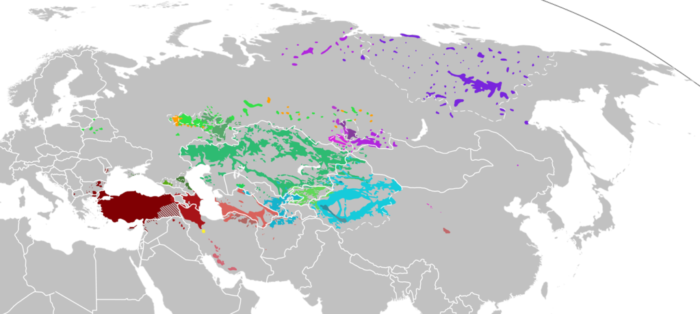9 Curious Facts about the Fascinating Turkish Language
Did you know that Turkish is the most widely spoken of the Turkic family? With almost 80 million speakers, it has more speakers than Vietnamese and almost as many as Korean.
It was first spoken in Mongolia and has been influenced by languages like Arabic and Persian.
Apart from being the national language of Turkey, it has a considerable number of speakers in Syria, Iraq, Germany, Bulgaria, Austria, Greece, and other European and Asian countries.
Looking for motivation to learn this beautiful language? Read the fascinating Turkish facts below and see why Turkish is one of the richest languages in the world.
1. Politeness Is Paramount
Turkish is one of the politest languages in the world. Its heavy use of honorifics and grammatical forms allows speakers to choose the appropriate level of formality according to social distance, age differences, and familiarity between the interlocutors.
Beginner students are sometimes baffled when they hear people address a single person using the plural second-person pronoun and verb declensions. But, in fact, this is something that speakers do to show respect towards the addressee.
As regards honorifics, Turkish uses bey (Mr.), hanım (Ms. or Mrs.), efendim (sir, madam), and sayın (honourable, dear), among others. Like in English and so many other languages, political and professional titles such as başkan (president), bakan (minister), and profesör (professor) are used in Turkish to refer to people as their position or status in society may require. But, unlike English, Turkish goes the extra mile and adds traditional honorifics such as bey or hanım together with the professional title (e.g., doktor hanım, bakan bey)
2. Is That Spelt Right? The Turkish Language Association
Have you ever wondered who determines whether a specific usage is right or wrong when it comes to language? (Clue: it’s not Google!)
At the moment, more than 100 languages from all around the world have language regulatory bodies. This includes Spanish, French, German… and Turkish (unlike English which, however, only has a handful of de facto rule-makers).
The regulatory body of the Turkish language is called The Turkish Language Association, founded in 1932 and headquartered in Ankara. Apart from its arbitration role, the Institution conducts significant linguistic research for both academic and pragmatic purposes.

Logo of the Turkish Language Association via Wikipedia.
3. The Turkish Language Reform
One of the most important tasks carried out by the Association was a language reform that sought to replace Arabic and Persian borrowings with words of Turkish origin.
In order to achieve this, they banned the use of loanwords in the press, which successfully led to the removal of dozens of foreign terms from the language.
While most of these were new words derived from Turkic roots, the TLA also revived a few Old Turkish words which had not been heard for centuries.
4. Turkish Words We Use in English
In the 19th century, Turkic loanwords, mainly of Turkish origin, began to enter the English language through the reports of the travellers, emissaries and traders on the one hand, and through historical writings and the press, on the other hand.
Having the widest and most intensive connections with England, Turkey provided the largest share of the Turkic loans, which entered into English directly.
The influence of Turkish on the English language can be seen in everyday words such as:
- Kiosk (from köşk, an open summerhouse)
- Kayak (fromkayık)
- yogurt (fromyoğurt)
- Pastrami(from pastırma)
- Zill(from zil, meaning “bell” or “cymbals”, a word of onomatopoeic origin)
5. Speaking Turkish Allows You To Understand Several Languages
Experts distinguish four main groups among the Turkic language family: North Western (Kıpchak), South Western (Oghuz), North Eastern (Siberian) and South Eastern (Karluk).

Distribution of the Turkic language family via Wikipedia.
Inter-intelligibility among each of these groups is very high, the North Eastern group being a special case as it is separated geographically, religiously and culturally from the other groups.
What does inter-intelligibility mean for Turkish learners? Once you are fluent in Turkish, it won’t be difficult for you to understand languages like Azerbaijani or Uzbek. Actually, if you speak Turkish, you will be understood even as far as Kyrgyzstan (Turkish facts rarely get more motivating than this!)
6. Turkish Has No Diphthongs?
The Turkish language has 8 vowels: ⟨a⟩, ⟨e⟩, ⟨ı⟩, ⟨i⟩, ⟨o⟩, ⟨ö⟩, ⟨u⟩, ⟨ü⟩. The Turkish vowel system can be described as three-dimensional. Vowels are defined by their place and manner of articulation by looking at three key features: rounded or unrounded, front or back, and low or high.
But are there diphthongs in Turkish?
Yes and no. Though a few diphthongs can be heard while someone is speaking Turkish, these are found in words of foreign origin. But when it comes to originally Turkish words, there are no phonemic diphthongs.
Even in loanwords, when one vowel follows another vowel in the spelling of a word, each vowel preserves its individual sound. For example, aile [a.i.le], laik [la.ic].
7. Turkish Words Are Oxytone
Oxytone words are accented on the last syllable. In Turkish, only place names, loanwords, some adverbials, and a few suffixed words are accented on other syllables.
Phonetic studies show that in words that have a non-final accent, such as banmamak (not to dip), the stressed syllable is said in a higher pitch and more loudly than the ones before or after it.
When the stress is final (which happens most often), as in banmak (to dip) the rise in pitch is much more subtle. In fact, many linguists argue that Turkish words are not accented at all.
8. Turkish Is an Agglutinative Language
Is there room in your mind for a few more Turkish facts?
Turkish is an agglutinative language, which means that words may contain several unchangeable morphemes to determine their meanings, and it relies on agglutination and affixation to create new words, for example, a verb from a noun. These suffixes indicate both meaning and grammatical function.
The intensive use of affixation often gives rise to impossibly long words such as Çekoslovakyalılaştıramadıklarımızdanmışsınızcasına, which means “As if you were one of those we didn’t succeed in converting to Czechoslovakian”.
9. There is a Whistled Form of Turkish
The locals in the village of Kuşköy (province of Giresun) have been using a whistled variety of Turkish for over 400 years. This Turkish region consists of a group of deep valleys and the rare mode of conversation allows for communications over distances of up to 4 kilometres.
According to the Turkish government, there are currently around 10,000 people using Whistled Turkish.
Once believed to be a dying language, the introduction of a course on this dialect in schools all across the region has succeeded in reviving this peculiar variety and its cultural heritage.
You can hear it being used and learn a bit more about this unique language in this video:
Did these Turkish facts spark up your interest? If you want to start working on your Turkish skills, contact us on our website and we’ll pair you up with a native teacher so you can start learning right now! Explore our Turkish courses with qualified teachers completely tailored to your interests.
